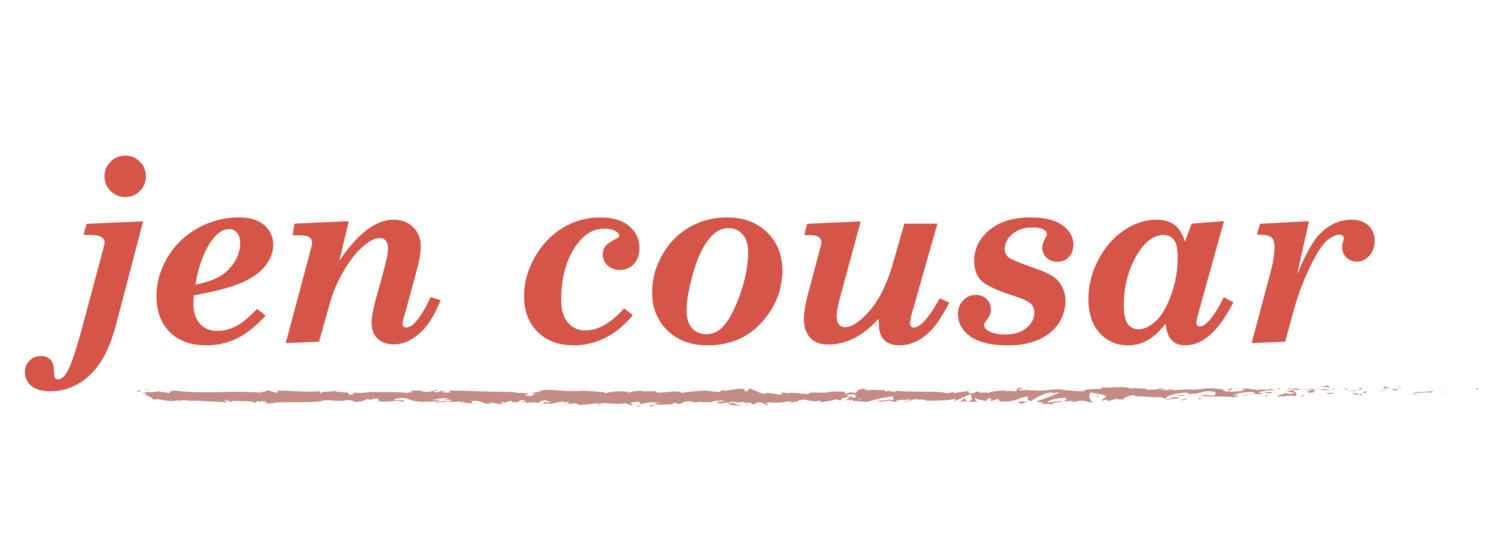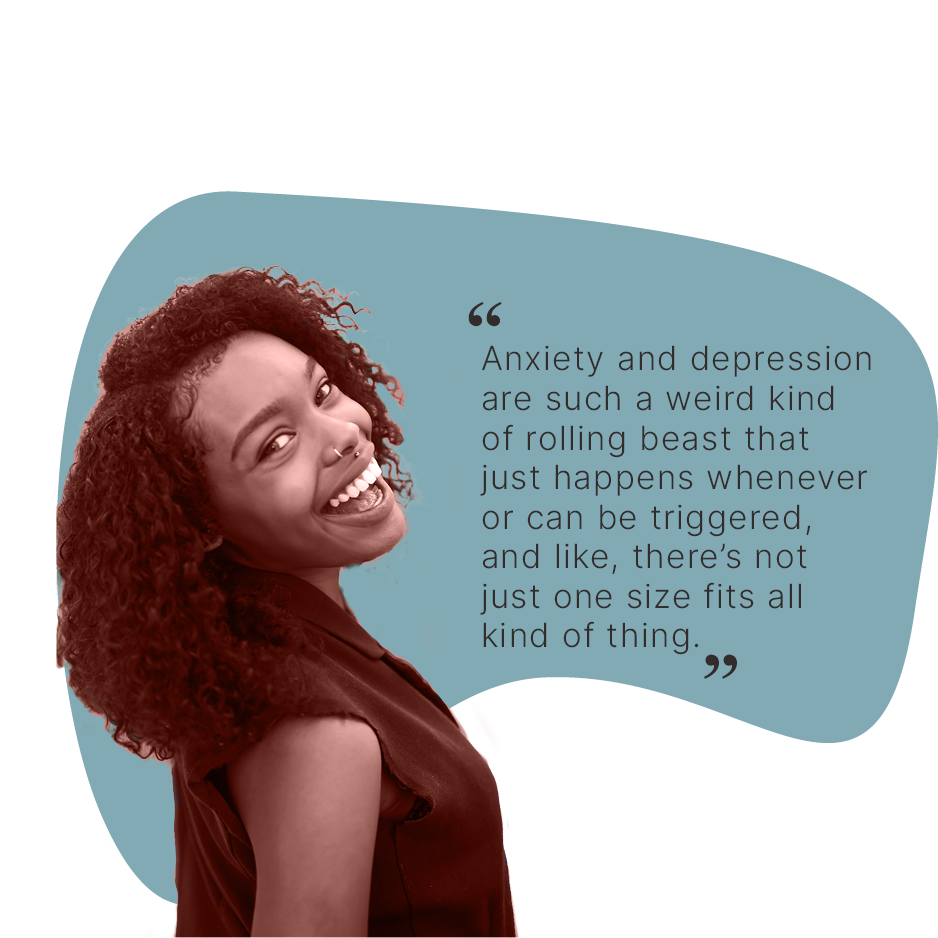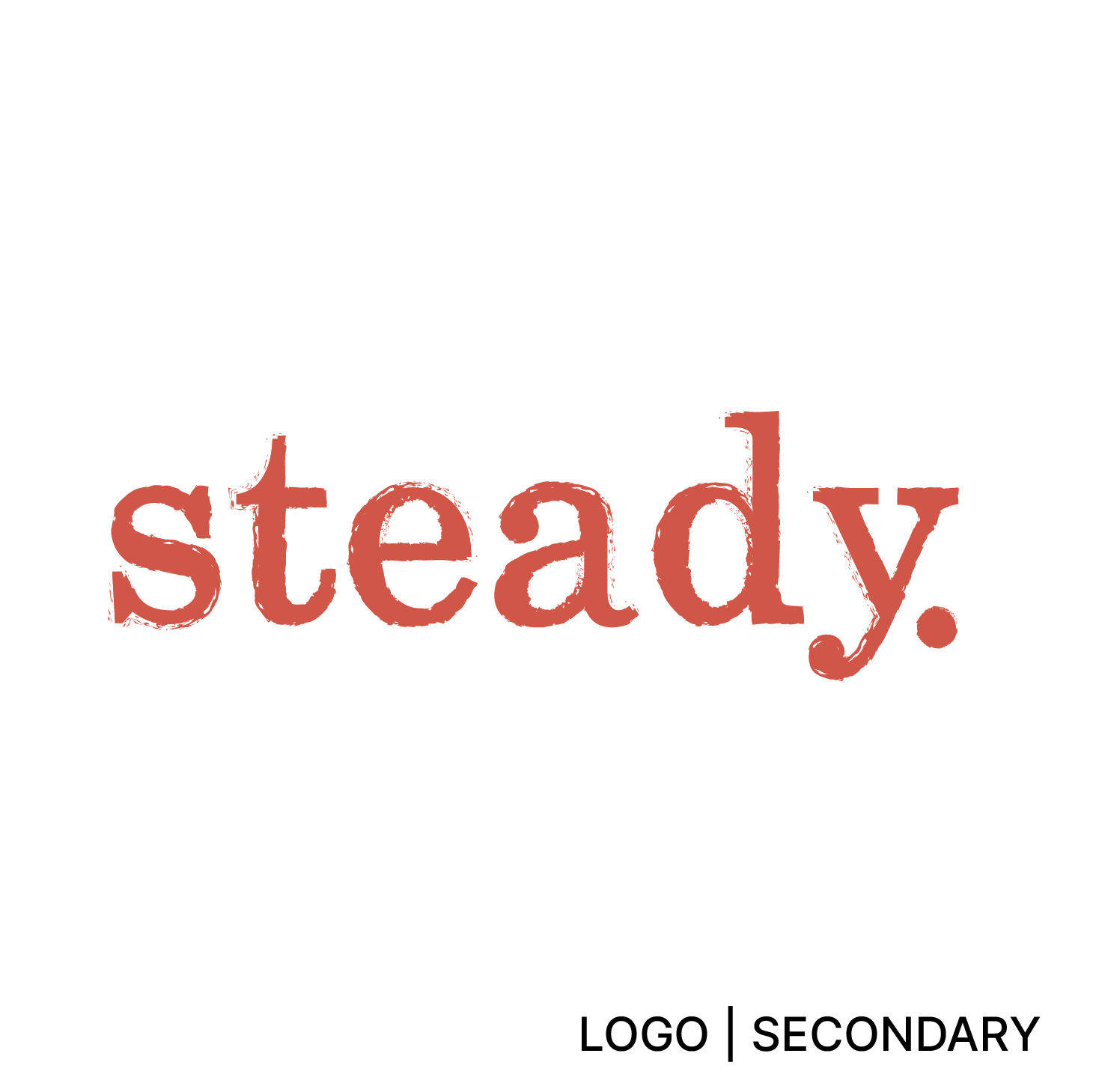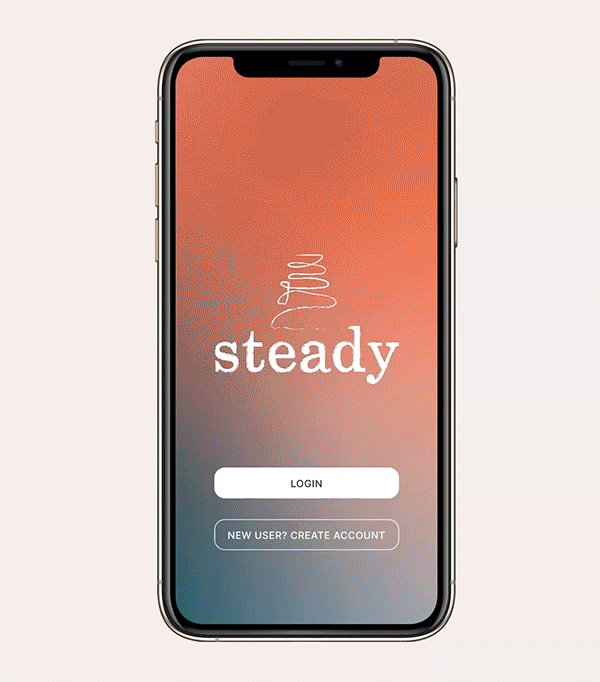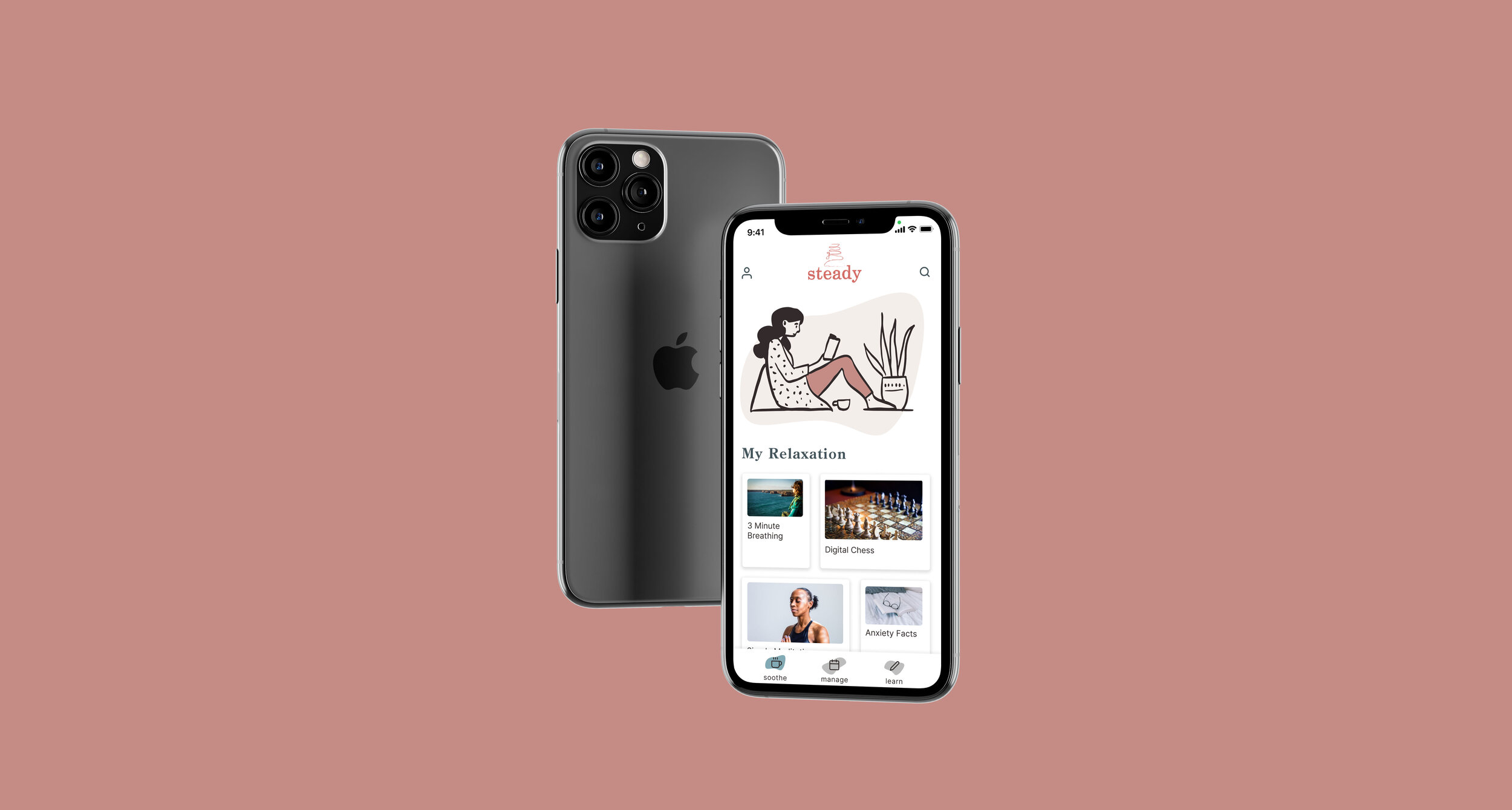
Steady is a highly customizable mobile app that helps people with anxiety find new coping tools to manage their anxiety symptoms in the short and long term.
Steady was created as my thesis project for my Masters degree in User Experience Design at Maryland Institute College of Art.
Why anxiety?
In the US alone, 18.1% (or 40 million adults) are diagnosed with or impacted by an anxiety disorder each year. Though anxiety and anxiety disorders are some of the most common mental health issues, less than half of those who suffer from them seek out treatment.
In 2018, I was diagnosed with Generalized Anxiety Disorder (GAD) and have gone through plenty of highs and lows with my mental health. A few years before, my sister was also given the same diagnosis. As anxiety became more of a common topic of discussion in our household, I learned that we were not alone and that many people we knew were struggling too. I constantly wondered “do other people manage their anxiety like I do?” or “have they found some magic way to make this easier?”
The Initial Idea
My initial idea for this project started when I took a look at my own anxiety. I have been to therapy before, as well as practiced long-term coping strategies such as meditation, daily journaling, and taking walks and getting outdoors (seeing the sun is a game changer for me). All of these methods have proven important and helpful; however, there are still times when I feel a panic attack coming on or I just need to get out of a negative spiral of thoughts. When those scenarios arise, the silly and the wonderful things in life—like cake decorating videos and pictures of dogs that look like fried chicken—are honestly the key things that get me through.
The duality of the tools in my anxiety coping methods toolkit led me to the question “Are there apps or digital tools out there that support the need for both whimsical and traditional anxiety management tools?” The answer was yes … and also no. There are plenty of apps that support one or the other of these areas, but I was hard pressed to find anything that did both. And that is how Steady was born.
Project Timeline & Tasks
My cohort and I were given a roughly 10-week timeline in which to complete our project from start to finish. As you can imagine, this was a quick turnaround, but I did not let that timeframe hinder my progress. I gave myself the timeline below as a guide to accomplish all tasks.
Users & Audience
Though other user types will be interviewed and considered as potential users, the main target audience will be women, ages 18–40 who suffer from either a diagnosed anxiety disorder or self-diagnosed frequent feelings of anxiety.
Why?
Women are twice as likely to suffer from most anxiety disorders.
People can have anxiety at any age, but this group has the highest percentage of anxiety.
Possible Challenges
The main challenge I identified early on was the fact that creating this project during a pandemic could have an important impact on my data collection. According to the CDC, anxiety and depressive disorder symptoms have increased in the US during the pandemic, along with many mental health-associated issues. To help differentiate between increased pandemic anxiety and what users would normally experience, I specifically spoke with users in my interviews who had previously been diagnosed with an anxiety disorder or who had self-diagnosed prior to the pandemic. I also made sure to clarify in interviews if certain anxieties (like germ and illness stressors) existed prior to the pandemic or had been brought on due to current health and safety concerns.
My initial research and project plan led me to develop my project’s problem statement:
PROBLEM STATEMENT
People with anxiety need a tool that provides different and customized types of relief in the middle of a panicked moment. They also need this tool to support them in the long term as they manage their anxiety through proven methods. Those with anxiety need short term and long term tools in one place that can be customized to them while also ensuring that they can avoid any triggering content.
Research Methods
I began the research process with the knowledge that managing anxiety is an incredibly personal experience with many possible treatment options, coping tools, and resources. With this in mind, my overall goal was to try and find the commonalities that those suffering with anxiety shared, so that the foundation of Steady could be as relevant to all potential users as possible.
Survey
I created a survey through Google forms to help me understand the frequency of anxious feelings in my target audience group, as well as the tools and resources they find most helpful in panicked moments and in long term management.
Key findings from the survey included:
Participants experience anxiety at a high frequency, making coping tools incredibly necessary and vital to daily comfort and management.
Primary symptoms of anxiety include overthinking, racing thoughts, trouble sleeping, and difficulty concentrating.
There are some common comping mechanisms, like therapy, exercise, and talking to a loved one; however, treatments and resources are just as diverse and personal as each users experience with anxiety.
User Interviews
I was incredibly lucky to interview five women who are living and thriving despite their struggles with anxiety. Since women are disproportionately impacted by anxiety and anxiety disorders, I chose to specifically interview potential users who identify as women. I felt it was incredibly important to conduct user interviews for this project so that any decisions I made would not be biased by my own experiences with anxiety and an anxiety disorder diagnosis.
Findings & Affinity Mapping
After conducting the survey, desk research, and user interviews, I assessed my data and created an affinity diagram to identify patterns and help determine key insights from the research.
Key Findings & Insights
Something I heard in multiple ways was that work can be a main anxiety trigger, while also being one of places where key coping tools are least accessible.
This led me to the conclusions that:
People with anxiety need a variety of tools at their disposal with varying levels of sound, visuals, and interaction points.
Those who I interviewed described multiple and varied triggers of their anxiety. These triggers ran the gamut of everything from flying and travel anxiety to germs to social interactions at work and at leisure gatherings.
This led me to the conclusions that:
Anxiety sufferers have vastly different triggers, and need access to curated tool kits for each of their common triggers to help manage anxiety and soothe symptoms.
Multiple users noted that half the battle is establishing a routine in relation to their anxiety management tools. They know some of the tools that work for them, but aren’t always successful at consistently using those tools.
This led me to the conclusions that:
People with anxiety need a simple, approachable way to set goals and hold themselves accountable to their long term goals and management strategies.
Personas
After collecting all research and developing insights, I created two unique personas to mirror my findings and help drive design decisions. I focused each persona on a particular user type: one who has been to a therapist and has been diagnosed with an anxiety disorder and the other who has self-diagnosed their anxiety. My research showed that these two user types had many commonalities, but have have had different experience and access to anxiety resources. It felt very important to me to consider both of these types of users and their needs as I moved forward.
User Journey Map
Once my user personas were in place, I created a user journey map to help me visualize their normal daily experience and to help identify possible opportunities for features or considerations in the app that would be helpful to my users. I focused on developing a normal day for Molly, and then identified what points in her day might trigger an anxiety reaction and how these reactions would ebb and flow throughout her day. Based on her goals and emotions, I identified possible opportunities for Steady to be most helpful during her struggles.
Design Exploration
Initial Sketches
Saving to Lists
The lists feature is highly important to the customization goal of Steady. Each tool in the app is accompanied by a “Save” button. When clicked on, a menu of all existing lists is available and users can save the tool to any of the main navigation areas, such as one of their goal pages or to the Soothe page, or to custom lists that they have created for either identifying favorite content or for triggering situations. Personal lists can be anything from “For Flying” to “All things Puppies” and so on, offering the user total control of a wealth of tools to help them manage their anxiety in a panicked moment and in the long term.
Wireframes
Tool Flows
Key features of each tool in Steady are that these are able to be saved to different lists that the user can create. They can also write feedback on their experiences with each tool so they can determine if tools are still working for them or not. The tool flows have evolved throughout the process, but these key goals remain the same.
Brand Design
Onboarding Flow
The onboarding flow for new users was important from the start because one key goal of Steady is that it is highly customizable to provide the most relief and impact on anxiety management for users. The onboarding process is focused around a brief quiz that helps Steady give customized suggestions for content right from the first login. The results of the quiz are used to populate likely matches in videos, articles, tools, and more, and the algorithm will continue to adapt based on what the users saves to their lists.
Explore, Save & Comment Tool Flow
The Soothe navigation option is the first thing users encounter whenever opening the app. This choice was made so that when anxiety takes over in a moment, the user has immediate access to tools they’ve saved to this page, as well as the option to explore based on previous preferences.
Once they’ve selected a tool to use, they are taken to that tools specific page, which gives more details about the tool, and a few notes such as whether it is best used with headphones for sounds at work or the category it falls into. If the user likes the tool, they can save it to any of their existing navigation pages or a custom list.
The user also has the option to review the tool after each use. They can record simply how they felt before and after this experience using common symbols and then write a journal-style entry. This feature helps the user track if the tool is helpful over time and allows them to notice patterns and helpful data about what does (or does not) help them lessen their anxiety symptoms in moments of panic.
Add New Goal Flow
The Manage navigation tab is designed to be the more long term management section of the app. Users set goals to help them process and manage their anxiety and symptoms over longer periods of time.
The user inputs what their goal is, why they are choosing it, and how often they plan on practicing this goal. In their Steady Profile under Notifications, they can also set push notifications to remind them to act on these goals.
For each goal, the user can save specific tools from the app that they want to reference and they will again be able to track their use and progress, but this time through a visual calendar that records when they’ve used a tool connected to a goal.
Learn/Therapist Connect Flow
The Learn navigation section is where Steady users can find verified, scholarly articles about anxiety and proven management methodologies, as well as connect with their therapist if they choose to see one. Therapists can add motivational quotes or reminders for the user, give recommended readings or resources, and assign any agreed upon homework, which the user can check off as completed.
If you’re interested in more, check out the full Steady prototype here.
Conclusion & Reflection
Steady began as an idea to help people, and has blossomed into a powerful and customizable digital experience. The app goes beyond simply joining short and long term tools like I expected, and rather allows people with anxiety to diversify their coping tools, strategically set mental health goals, and craft a better and highly personalized anxiety toolkit.
Next Steps
Steady, though robust, is in no way complete. Some of the functionality that I’d like to consider next is:
Creating a more fully realized therapist messaging center, in addition to creating the therapist/mental health professional portal side to connect with patients.
For those who like hands-on coping tools, the option to purchase supplies through the app or assist the user in finding them close to home.
A way to integrate the users loved ones into the experience, whether through recorded messages or texted words of encouragement.
